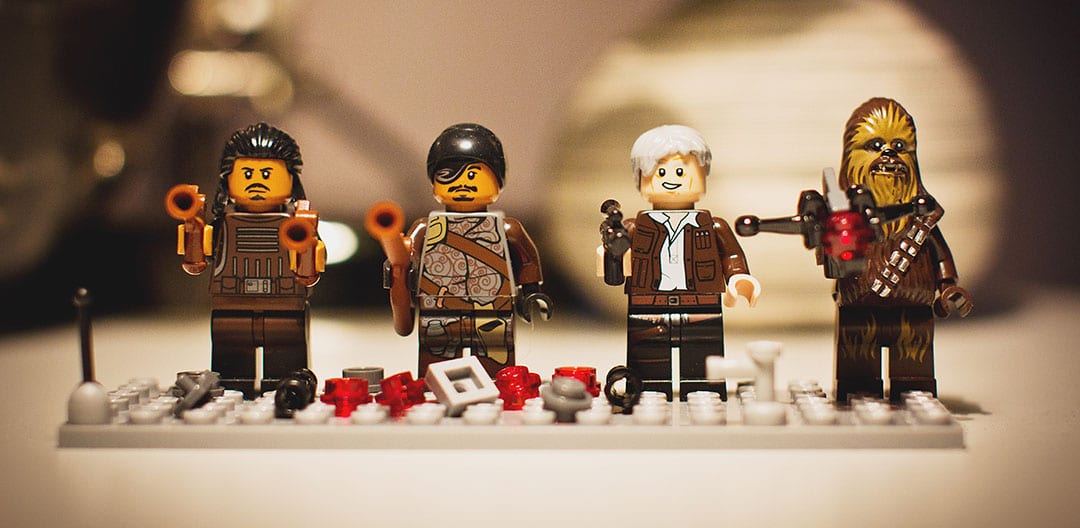How three top retailers won at Gamification
In the world of retail, few endeavours represent a badge of courage as does expanding into the realm of gamification. That is, until now. Historically, retailers - cautions about any activities that could interfere with the path to purchase - have been hedging their bets against gamification strategies, which apply gaming elements to the customer experience. Instead, they've opted for sure bets, according to Lisa Biank Fasig of Colloquy.
Retailers are always most concerned with anything that might distract or disrupt the sales funnel, even if it has proven efficacy in driving incremental engagement, according to Gabe Zichermann, CEO of Dopamine (a creative agency dedicated to gamification). But that caution is about to shift.
In fact, the number of retailers that plan to add a gamification component to their loyalty platform is expected to explode, according to research from Boston Retail Partners, which found that retail adoption of the strategy has escalated to 31% in 2015 from 6% in 2014, and is projected to increase 181% in the next five years.
"With increased competition and dwindling attention spans of consumers, retailers are looking for innovative ways to engage consumers and distinguish their brands," Brian Brunk, principal at Boston Retail Partners, wrote in an email. "Gamification is a creative and fun way to enrich engagement, drive store traffic and enhance loyalty."
However, the expected growth of gamification brings with it opportunities for pitfalls as well as triumphs. Retailers can increase the odds for a winning hand, however, if they follow their peers and gamification experts.
The hallmark of a good game strategy is it gets the customer to habituate, to become one with the game and therefore the brand. The key to achieving this is variable outcomes, which feed the impulse to play.
"Leave some elements of a gamified promotion hidden or randomized," said Dave Wentker, CEO of Tapcentive, a mobile marketing platform that focuses on location-based technology and gamification. "Consumers expect that they can find any product, anywhere, at any price these days thanks to the Internet. That expectation leads to dread when it comes to shopping in most retail environments."
The following are three retail examples of gamification that strive to spin such dread into gold:
- Victoria's Secret The lingerie chain's Pink Nation app, geared toward college-age consumers, build social communities through games, shopping and style galleries. Members access filters and stickers to "pink" their favorite pictures and get sneak previews. "Victoria's Secret has had one of the more dramatic and well-covered successes," Zichermann said. "It's a really fun experience that leverages the Tinder - Hot or Not - mechanics to help drive social engagement around their apparel". Victoria's Secret Pink Nation app allows users access to exclusive offers, invitations and games. Geared toward college-age consumers, the programme builds social communities through games, shopping and style galleries.
- The Home Shopping Network (HSN) HSN's Spin 2 Win game is among more than 40 on the online HSN Arcade, where north of 1.2 million members play games to earn badges toward rewards. Spin 2 Win features a slot machine that users spin in hopes of getting three identical ticket offers. While gaming is less about revenue than it is an engagement tool, it does translate to greater revenue, spokeswoman Marissa Moschel wrote in an email. "Arcade customers spend more time on-site, purchase more units, outspend non-players, and have greater overall satisfaction". HSN's Spin 2 Win game features a slot machine that users spin in hopes of getting three identical ticket offers. It is among more than 40 games on the online HSN Arcade, where 1.2 million members play games to earn badges toward rewards.
- Bonobos In its promotion, the online men's clothier hid images of models dressed in signature pants on its NOTCOT.org and NotCouture sites. The first 50 people to find the pants each day received a $25 Bonobos credit. This strategy includes an essential feature of good gamification, and that is compelling content that generates excitement, Wentker said: "However, the excitement will only occur if what the consumer is playing for or achieving is truly exciting to them."
"What these brands have in common is shopper regularity. Boston Retail Partners finds gamification is best suited for retail formats where customers make frequent purchases," Brunk said. "Unless a consumer is a very frequent shopper or can be converted to a frequent shopper, gamification as a customer engagement tool can be a challenge."
Following are some key elements to a successful retail gamification strategy, from Zichermann and Wentker:
- Understand how the customer's personal journey intersects with the product. "Instead of thinking narrowly about how sporting goods are literally used, it's crucial to conceive of their place in the user's long-term life," Zichermann said. Once the retailer understand this intersection, it can break down the journey into steps that can be converted into a programme, and then develop a set of incentives to guide the steps.
- Include elements of surprise. Retailers should avoid the predictable when strategizing their game plan, meaning they should randomize their outcomes and goals, Wentker said. This will especially help to get shoppers into the door. "Gamifying in-store promotions is one way to drive up excitement while ensuring that consumers learn the most exciting experiences can only be had by coming in," he said.
- Be ready to invest time. Gamification is not a short-term project. Retailers need to budget six to nine months to work on an effective gamified engagement strategy, Zichermann said. If trying to gain lift for the holidays, for example, a retailer should start planning early in the year.
"Retailers should memorize the first rule of gaming: The contest should be designed around what the customer wants, not the company. If a retailer can do that, it will likely earn a badge of approval," concluded Biank Fasig.
More Info:




